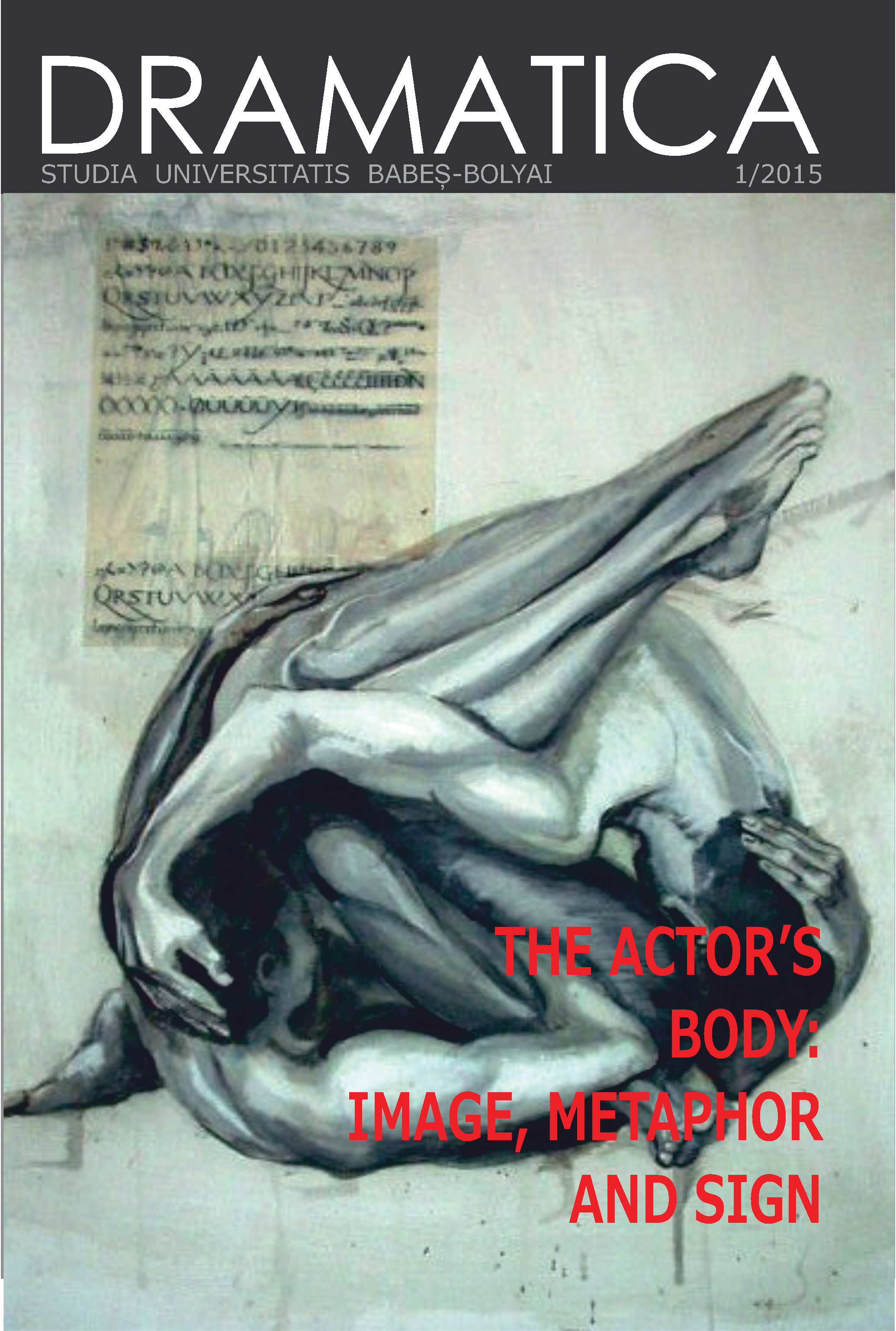Yoshi Oida, portrait de l’acteur en initié
Keywords:
Yoshi Oida, actor, initiation, body, technique.Abstract
Yoshi Oida, Portrait of the Actor as an Initiated Human Being. The present paper tries to draw the portrait of the actor as an initiated person, in touch with some truth that transcends the art of theatre and even the limits of human nature. The theater actor is at the center of some complex paradoxes: it must embody fictional characters allowing viewers to grow, to evolve. It embodies a discourse about human nature, a discourse which is not without problems. A few important questions can be raised here: first of all, at least in theory, the actor must reach a truth in order to share it with the audience. In practice, the construction of the self is an unaccomplished work of a lifetime. Can an actor be an initiator without having previously been initiated himself? We will show how the work on the body is the main technique that allows the actor to resolve these paradoxes. The example on which the scientific approach will be focused is the practical work and the theories of Yoshi Oida.
References
I. L’auteur et le corpus
OIDA Yoshi, L’Acteur flottant, Actes Sud, Le Temps du théâtre, 1992.
OIDA Yoshi, L’Acteur invisible, Actes Sud, Le Temps du théâtre, 1998. http://www.yoshiOida.com
II. Les voies de l’accomplissement personnel
A. Accomplissement personnel au quotidien
LACROIX Michel, Le développement personnel. Du potentiel humain à la pensée positive, Flammarion, Essais, (2000) 2004.
LOREAU Dominique, L’Art de la simplicité, Robert Laffon, Hors Collection, 2005
OKAKURA Kazuko, Le livre du thé, Dervy, L’être et l’esprit, 1999.
Psychologies Magazine, Hors série n° 6, « Le guide du développement personnel », octobre-novembre 2005.
B. Accomplissement personnel et corps
BERTHERAT Thérèse, Le corps a ses raisons, Seuil, Points, 1998.
DROPSY Jacques, Le corps bien accordé, Un exercice invisible, Desclée de Brouwer, Intelligence du corps, 1992.
FELDENKRAÏS Moshé, Énergie et bien-être par le mouvement, Dangles, Psycho-Soma, 1999.
HARDY Christine, SCHIFRINE Laurence, TOMASELLA Saverio, Habiter son corps, La méthode Alexander, Eyrolles, Les chemins de l’inconscient, 2006.
HELFE Wolfram, Toucher l’âme par le corps. La Leibtherapie selon K.G. Dürckheim, Le Souffle d’Or, Chrysalide, 2005.
MUSACHI Miyamoto, Le Traité des cinq roues, Albin Michel, Spiritualité vivante, 1993.
C. Accomplissement personnel et voix
ABEL Josette-M., Le Pouvoir spirituel du son et de la voix, Rocher, Documents, 2003.
AUCHER Marie-Louise, En corps chanté, Hommes et Groupes, Hommes Groupes, 1993.
BARRAQUE Philippe, Voyages dans la voix, Diamantel, Planète Voix, 1999.
BONHOMME Jacques, La voix énergie, Instrument de nos émotions, Dangles, Psycho-Soma, 1999
MELOT Phillipe-Nicolas, Mettez du « ki » dans votre voix ! Le chant comme outil de développement personnel, Le Souffle d’Or, Chrysalide, 2006.
III. Théâtre et spiritualité
BANU Georges, L’Acteur qui ne revient pas, Gallimard, Folio-Essais, 1993.
CLAISSE Aurélie, Soyez l’acteur de votre vie. 150 techniques de formation de l’acteur au service du développement personnel, Dangles, Psycho-Soma, 2005.
DULLIN Charles, Souvenirs et notes de travail d’un acteur, Libraire théâtrale, 1998.
DUSIGNE Jean-François (dir.), Brûler les planches, crever l’écran, L’Entretemps éditions, Les voies de l’acteur, 2003.
GINSBOURGER Marie, Voix de l’inouï, Le travail de la voix au Roy Hart Théâtre, hier et aujourd’hui, Le Souffle d’Or, Chrysalide, 1996.
ZEAMI, La tradition secrète du nô, Gallimard, Connaissance de l’Orient, 1985.
Downloads
Published
How to Cite
Issue
Section
License
Copyright (c) 2015 Studia Universitatis Babeș-Bolyai Dramatica

This work is licensed under a Creative Commons Attribution-NonCommercial-NoDerivatives 4.0 International License.


